Number of EU citizens applying for British citizenship soars by 32% in a year
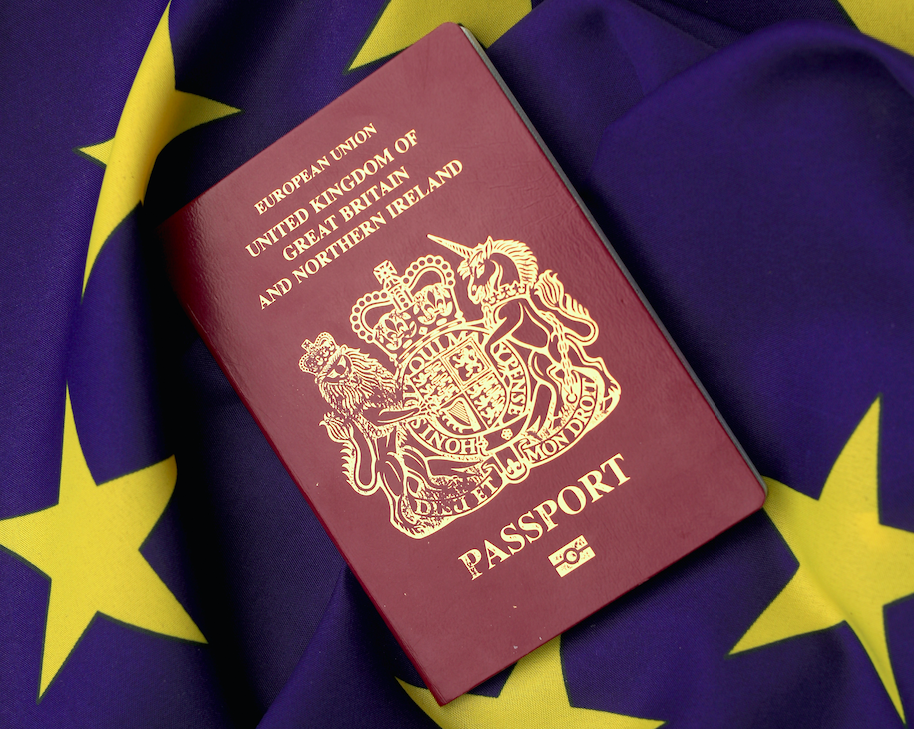
The number of EU citizens applying for British citizenship has soared by 32% in a single year, official statistics show.
According to the Office for National Statistics (ONS), there were 148,737 applications for British citizenship in the year ending September 2018, an increase of 8% from the previous year.
Out of that figure, applications for citizenship made by EU nationals increased by 32% to 43,545.
EU nationals now account for nearly a third (29%) of all citizenship applications, compared with 11% in the year ending September 2016.
The figures also show that net migration from the EU to the UK has fallen to the lowest level in nearly six years.
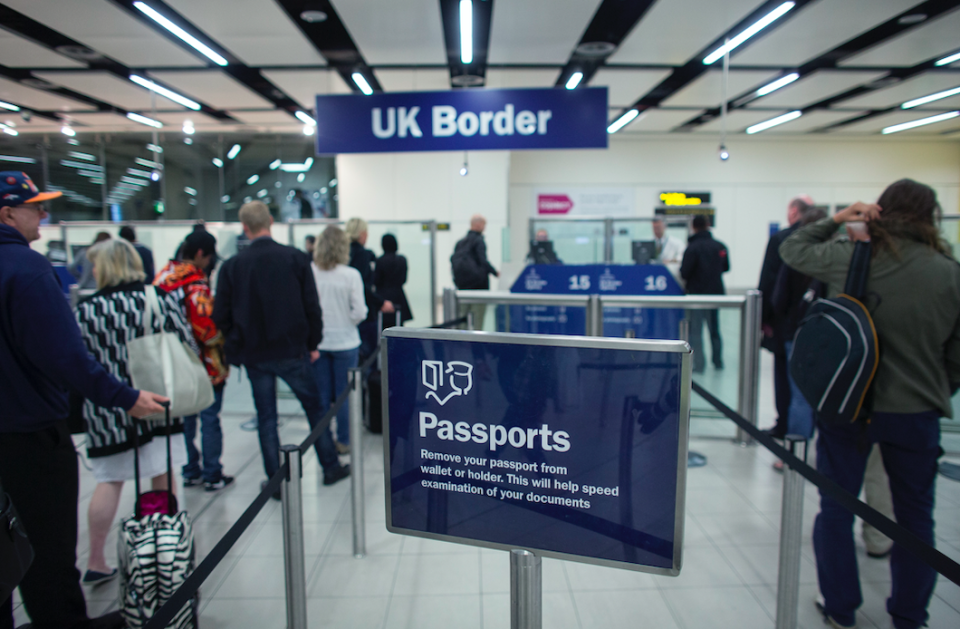
Official statistics show an estimated 74,000 more EU nationals came to live in the country for at least 12 months than left in the year to June.
The figure is the lowest since the year ending September 2012, when it stood at 65,000.
Non-EU net migration was at its highest since 2004, with 248,000 more non-EU citizens arriving than departing, the Office for National Statistics said.
COUNTDOWN TO BREXIT – LATEST ANALYSIS FROM YAHOO UK
Where do Theresa May’s ministers stand on Brexit?
Post-Brexit trip to Europe? Try these non-EU alternatives
Bank of England governor ‘confident’ about UK banks’ Brexit readiness
Don’t be fooled – the biggest battle over Brexit starts now
Hard Brexit ‘could cripple UK science’ warn Nobel Prize winners
Overall, net long-term international migration was 273,000.
This is down from record levels of around a third of a million two years ago, but still almost three times the Government’s target of less than 100,000.
Jay Lindop, director of the ONS’s centre for international migration, said: ‘Net migration continues to add to the population and has remained fairly stable since its peak in 2016.
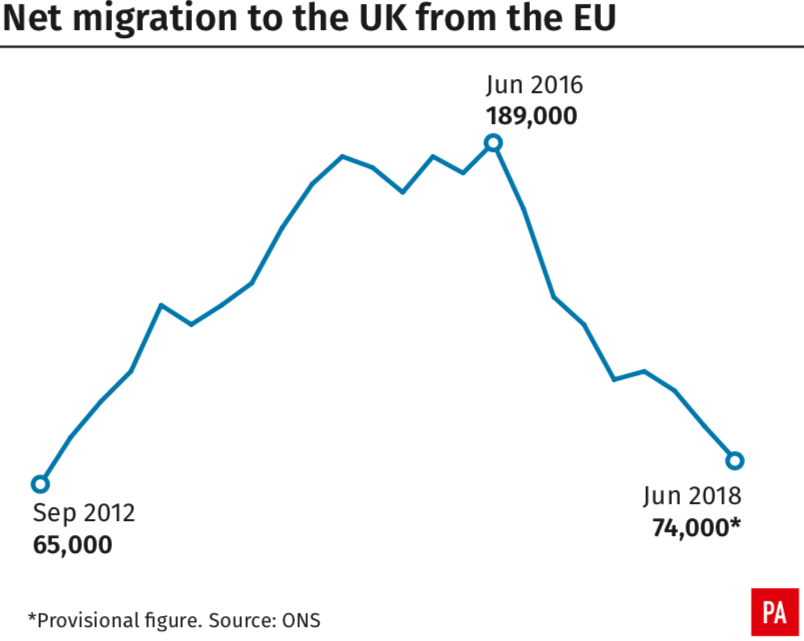
‘However, there are different patterns for EU and non-EU migration.
‘Due to increasing numbers arriving for work and study, non-EU net migration is now at the highest level since 2004.
‘In contrast, EU net migration, while still adding to the population as a whole, is at the lowest since 2012.’
For the second consecutive quarter, the figures showed more citizens of eight eastern European countries left the UK than arrived.
Net migration from the so-called EU8 nations which joined the bloc in 2004, including Poland and the Czech Republic, was minus 14,000 in the year to June.
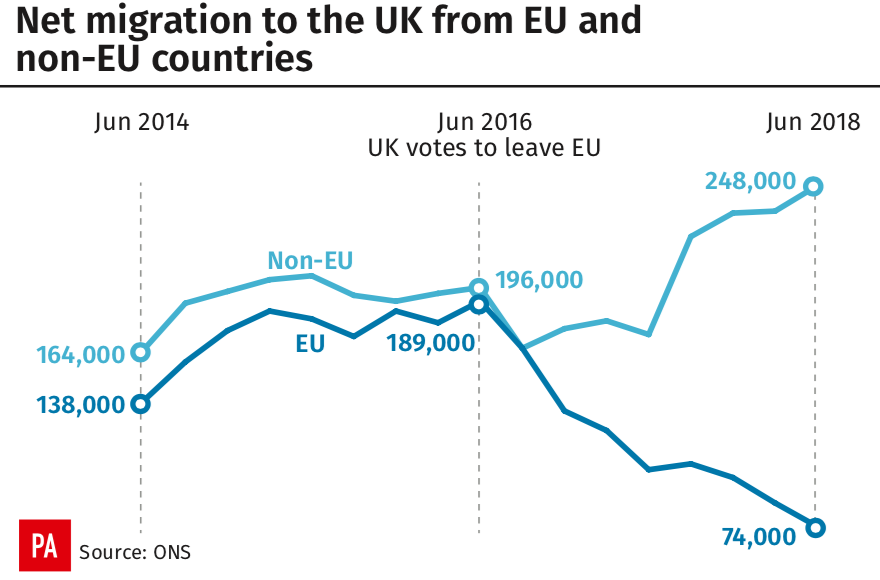
The ONS report said: ‘This has been driven by a decrease in EU8 immigration, particularly for work, and an increase in emigration over the last two years.
‘There could be several reasons for this changing pattern, decisions to migrate are complex and people’s decision to move to or from the UK will be influenced by a range of factors.’
Nationals of 14 longer-term EU member states, such as France, Germany, Italy and Spain, continue to add to the UK population with net migration of 47,000.
An estimated 34,000 more Romanians and Bulgarians arrived than left, although this figure has almost halved since the Brexit vote in 2016.
While immigration data published since the EU referendum have sparked claims of a ‘Brexodus’, figures for the rest of the world are tracking in the opposite direction.
Non-EU net migration showed a ‘statistically significant’ year-on-year rise, reaching almost a quarter of a million.
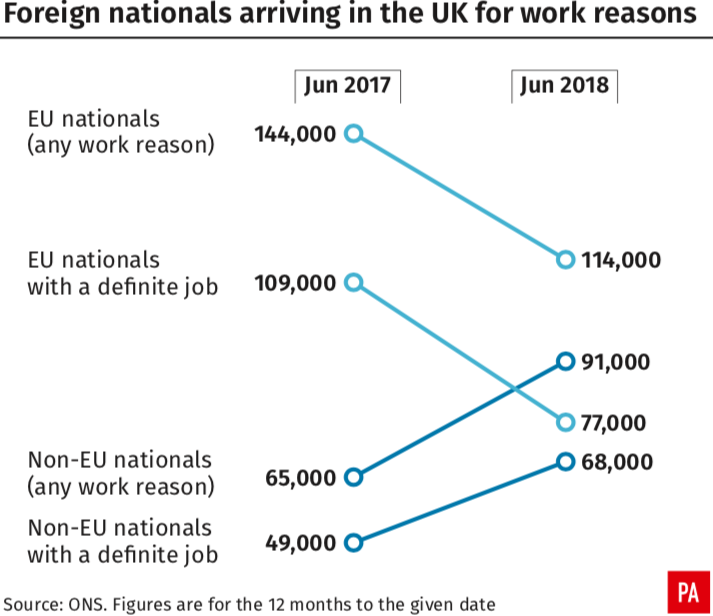
The ONS said increases in non-EU immigration for work and study have been seen in the most recent year, particularly for Asian citizens.
While the UK remains bound by EU free movement rules, immigration from the rest of the world is subject to restrictions.
Shadow home secretary Diane Abbott said: ‘These data reinforce the view that the Government’s net migration target is reckless and foolish.
‘The target has never once been met and non-EU migration alone far outstrips it.’
The figures come as the Government prepares to publish its much-delayed proposals for Britain’s post-Brexit immigration system.

 Yahoo News
Yahoo News 

